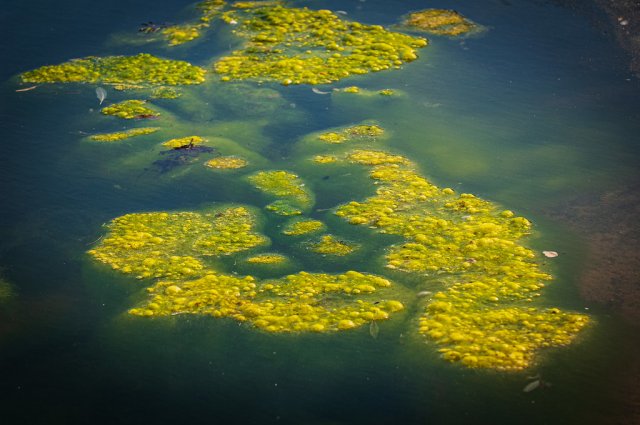PIPs: Harmful Algal Blooms and Satellites

Harmful algal blooms (HABs) caused by cyanobacteria occur in waters throughout the United States and threaten the health of humans, pets, and ecosystems. It is challenging to know when HABs might occur, and environmental agencies lack the resources to monitor every HAB in their jurisdictions.
To address this problem, EPA scientist Blake Schaeffer was awarded one of the first Pathfinder Innovation Projects in 2011 to use satellite imagery to detect algal blooms in as many lakes as possible.
Dr. Schaeffer and his team found that remotely sensed satellite imagery could be used to reliably quantify the presence of cyanobacterial blooms in a large lake by identifying the signature combination of pigments produced by the organism. So, when a patch of green cyanobacteria grows on a previously blue lake, satellite imagery can be used to detect the emerging bloom.
In the years since 2011, this research has expanded from a proof-of-concept PIP to a fully operational research workflow at the Agency. EPA, in collaboration with the National Oceanic and Atmospheric Administration, the National Aeronautical and Space Agency, the U. S. Geological Survey, and now the U.S. Army Corps of Engineers, distributes daily measures of cyanobacteria using the innovative method developed from the PIP.
These data are then posted to a public web application, where they can be used directly by stakeholders to help protect human, animal, and environmental health from cyanobacterial HABs. For example, several state agencies are using the data to quantify HABs in their states and to inform advisories that warn the public about nearby blooms.
“There was a high chance of failure and a high chance of success, but if it worked, the payback would be exponential,” Dr. Schaeffer said about his initial project. Today, this payback continues to grow as the project continues to expand. Currently, the team is working to grow the project’s reach from about 2,200 large lakes to over 270,000 lakes across the country.
Read about more PIPs success stories and get all the latest news from PIPs on our PIPs homepage.
